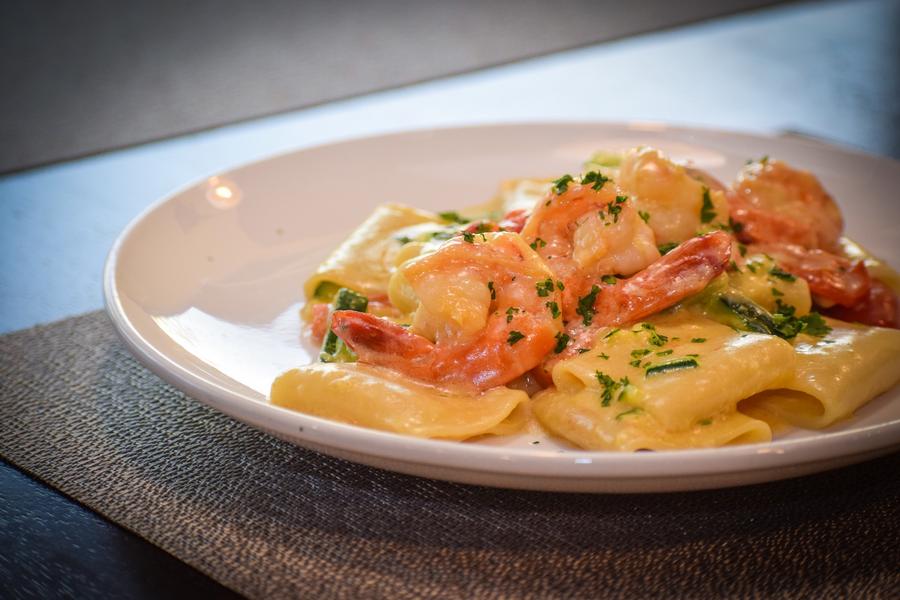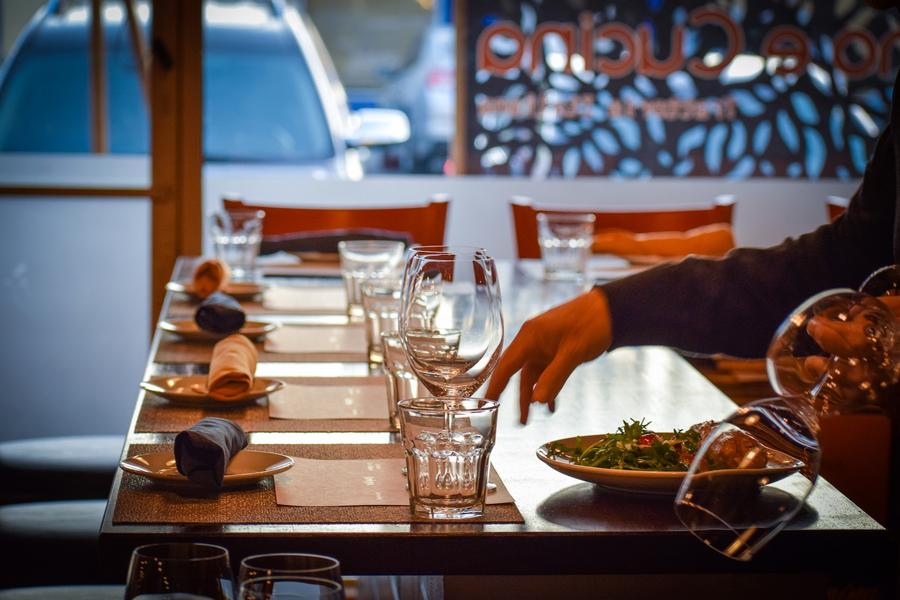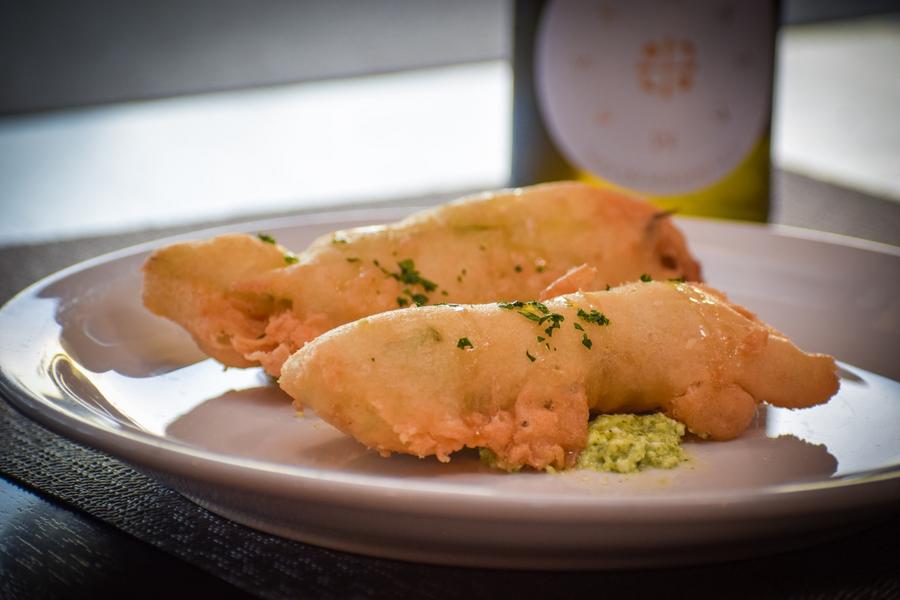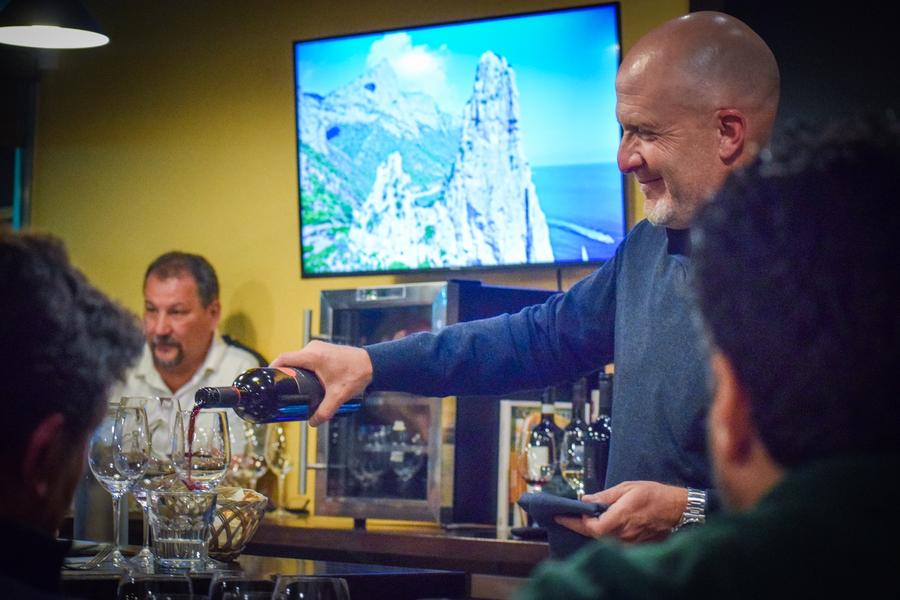In an age where food is increasingly removed from the hands that make and serve it—amid the rise of Postmates and ghost kitchens—Lorenzo Mottola of Vino e Cucina seeks to create a return to classic Italian hospitality in an area of Long Beach long known for lacking quality food
The first is a sense of removal: The small strip of businesses that cut through the northeast corner of Carson and Lakewood feel eons away from the nearby, traffic-ridden, suburban-meets-commercial vibe of the area, particularly when inside the warm space.
Unapologetically extroverted with patrons and lacking any sense of shyness, Mottola assures you of two things when you eat with him: Your food and wine will be great while also being greatly priced and, perhaps even more, food in a restaurant is a moment to take time for you and the people at your table.
“In the United States, hospitality is a business,” Mottola said. “And I do my best to not approach my restaurant that way because I know if there was an American investor to come here, they would start chipping away: ‘You need to make your menu smaller. You need to stop serving these wines at these prices. You need to do this. You need to do that.’ But in Italy, restaurants are extensions of family—really, they are true extensions of family and hospitality is engrained in us; it is not a business but a way of life.”

But Motolla plays a very different game: He lets his patrons adjust organically, encouraging them to order different things each time, try varying wines, read his emails, hold conversation with him, stay a bit longer—all a very hands-on approach and very Italian approach in an age where Postmates, food-to-go, and Food For TikTok—things Italians are inherently allergic to for the most part—are becoming the norm.

And as you take a bite of the best fiori di zuccas in the city—squash blossoms he has shipped overnight from Puglia—you realize he was right.
Vino e Cucina’s food is the essence of what makes Italian food in the motherland so phenomenal: unfussy, uncomplicated cuisine that is made using the resources of Italy’s vast culinary terrain and terroir.
The wine is perfect with the appetizer and, eschewing the very American ideal that drinks and food are to be consumed separately rather than paired, you realize that he did this because he doesn’t want you to be counting your minutes, picking up your phone, or worrying about when you’ll be getting home.
**** **** **** **** **** ****
I have been writing about Vino e Cucina in bits and pieces over the past few years, often including them on my Underrated Restaurants list because they deserve so: It was food that reminded me of my grandfather Natalino, who was born in Rome, and of the way in which he made certain every meal was a sharing of experiences and love.

The situations he describes and the words he uses—patience, explanation, origin, taste, time—now clearly echoed many of my experiences in Italy, particularly one in Florence.
Amid an absolutely jam-packed lunch hour in a space specializing in porchetta and pasta, an American couple stopped a server mid-serving to ask, “How long the wait will be?” The server, smiling sarcastically, gestured to a nearby table and said, “Would you like me to ask them how long they will take to enjoy their meal and time together? I won’t. It could be ten minutes. It could be two hours.”
And away she danced, grasping the very plate of porchetta that was destined for my table, before returning to her duties.

And this is what makes Vino e Cucina such a hidden gem: There is the fact that, for the most part, East Long Beach has been a haven for corporatized food.
One can easily point to the success of the Long Beach Exchange as a direct middle finger to that corporatization: For the first time in decades, East Long Beachers had a place to dine that wasn’t a drive-thru or major chain.

Take Vino e Cucina’s cacio e pepe, the core Roman pasta dish—there are four pillar Roman pasta dishes: carbonara, amatriciana, pasta alla gricia, and cacio e pepe—famed for being nothing but four ingredients: spaghetti (or bucatini in some places), Pecorino Romano cheese, freshly cracked and toasted black peppercorns, and pasta water.

There are other plays on subtlety that create wonderful dishes, like a paccheri special where the massive tubes—think rigatoni on steroids—become containers for a saffron cream sauce that is light on the cream and heavy on the flavor, the ocean-ness of the shrimp meeting the saffron. Simply put, a beautiful dish.

Or back to those fiori di zuccas, easily the best in the city.
And he is right: Surrounded by a light, fluffy casing and stuffed with mozzarella, these earthy, floral delights sit atop their house made pesto and ricotta. The result? A quite possibly perfect appetizer.
And while I can go on and on about the food, for me, genuinely, I always return to Mottola when it comes to Vino e Cucina: His presence, his knowledge, his hospitality.
“Tranquillo,” he told me when I would have the piece up as soon as I could. “How about another glass of wine?”
Dolce far niente indeed, mio amico.
Vino e Cucina is located at 4501 E. Carson St. in Suite 105.




